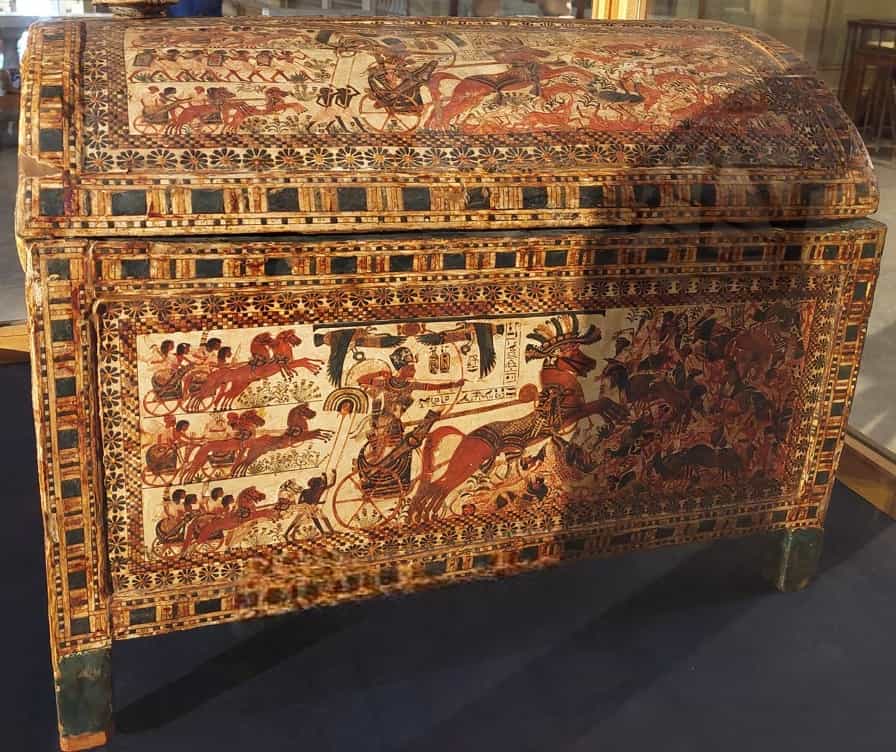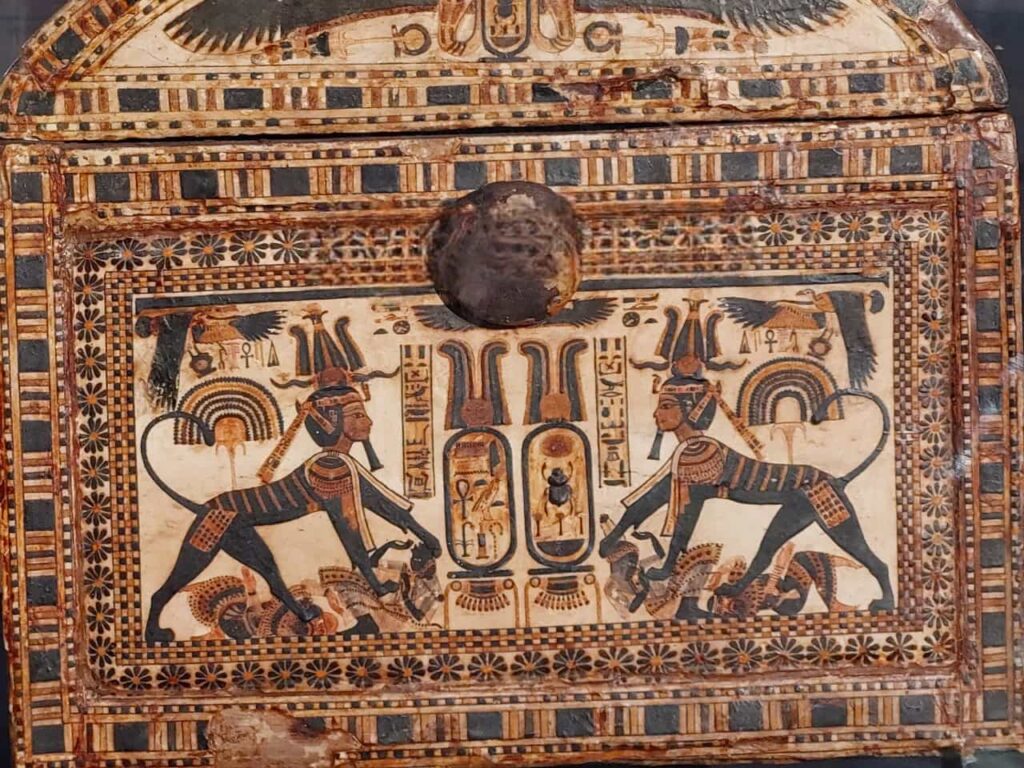In the annals of history, certain artifacts stand as magnificent testaments to the grandeur and prowess of ancient civilizations. Among these treasures, the hunting wooden box discovered within the tomb of the renowned Egyptian pharaoh Tutankhamun, also known as King Tut, has captivated the imaginations of historians and art enthusiasts alike.
Adorned with elaborate scenes of hunting and warfare, this exquisite box provides a glimpse into the life and reign of one of Egypt’s most celebrated rulers.
Crafted from wood and adorned with intricate carvings. On one side of the lid, we witness King Tutankhamun, resplendent in his royal chariot, engaged in a thrilling hunt for gazelles, deers, ostriches, and other desert creatures. The detailed craftsmanship showcases the pharaoh’s skill and prowess as a hunter, accentuated by the vibrant imagery.
On the opposite side, King Tut is depicted in a fierce confrontation with formidable lions, showcasing his valor and bravery in the face of danger.
The short sides of the box portray the pharaoh as a mighty Sphinx, triumphantly trampling the enemies of both the North and the South, asserting his dominance and authority over rival factions.
The elongated sides of the chest are adorned with epic battle scenes, illustrating King Tut riding triumphantly in his chariot, accompanied by a well-organized army of archers, lancers, cavalrymen, and fan bearers, charging fearlessly against the enemies of Egypt.
One side portrays the Southern adversaries, while the other depicts the Northerners, showcasing the pharaoh’s military might in defending his kingdom from external threats.
The lid of the box further reveals two captivating scenes of King Tutankhamun engaging in wild animal hunts, underscoring his prowess not only as a ruler but also as a skilled hunter. Along the short sides, the pharaoh, embodied as a formidable sphinx, is shown triumphantly crushing fallen enemies—a visual representation of his dominance over adversaries.
When the hunting box was discovered within the opulent confines of Tutankhamun’s tomb (KV62) in the illustrious Valley of the Kings in West Thebes, it held an intriguing array of personal belongings. Among these were sandals, cult robes, necklaces, a headrest, and a belt—a collection that revealed glimpses into the monarch’s daily life.










